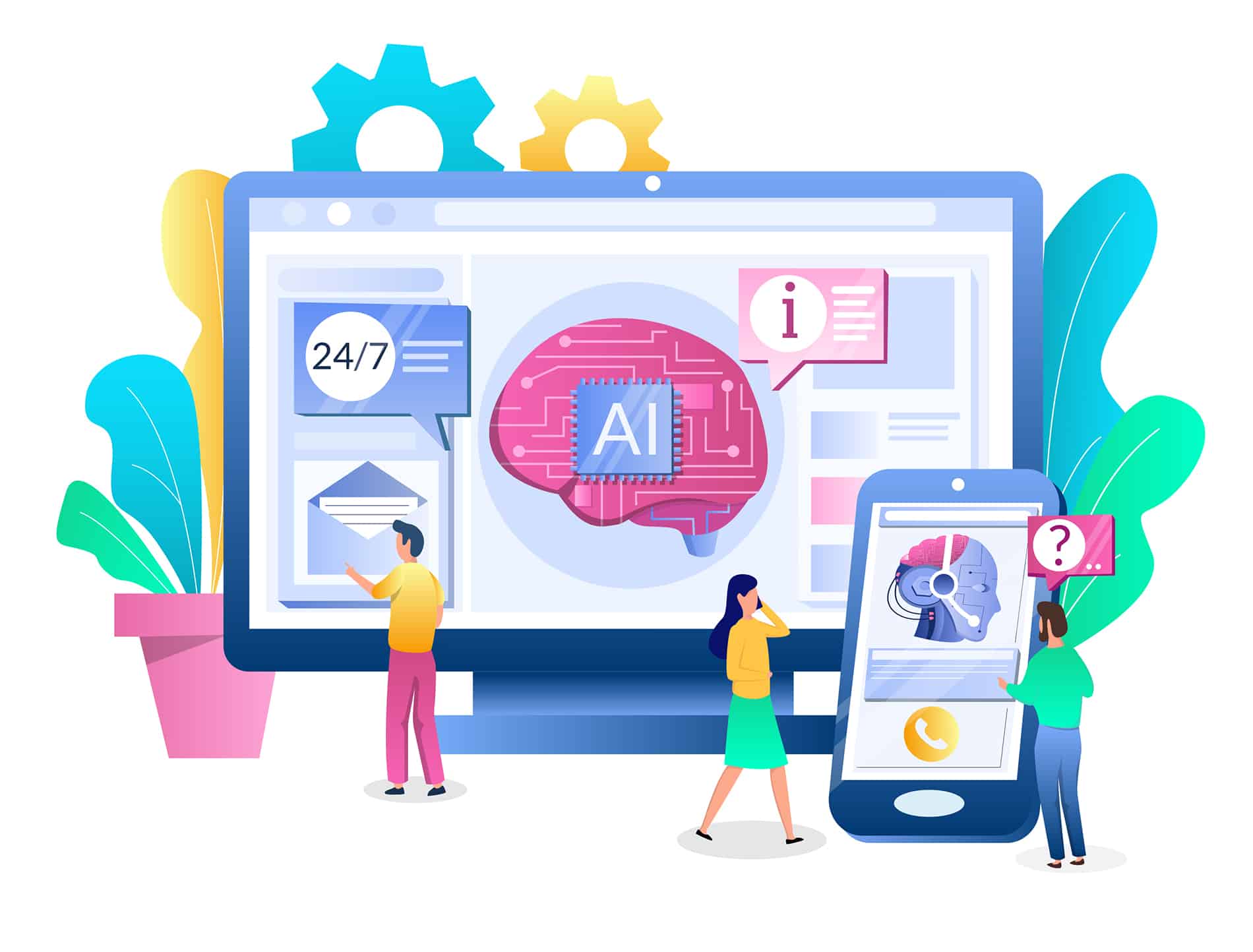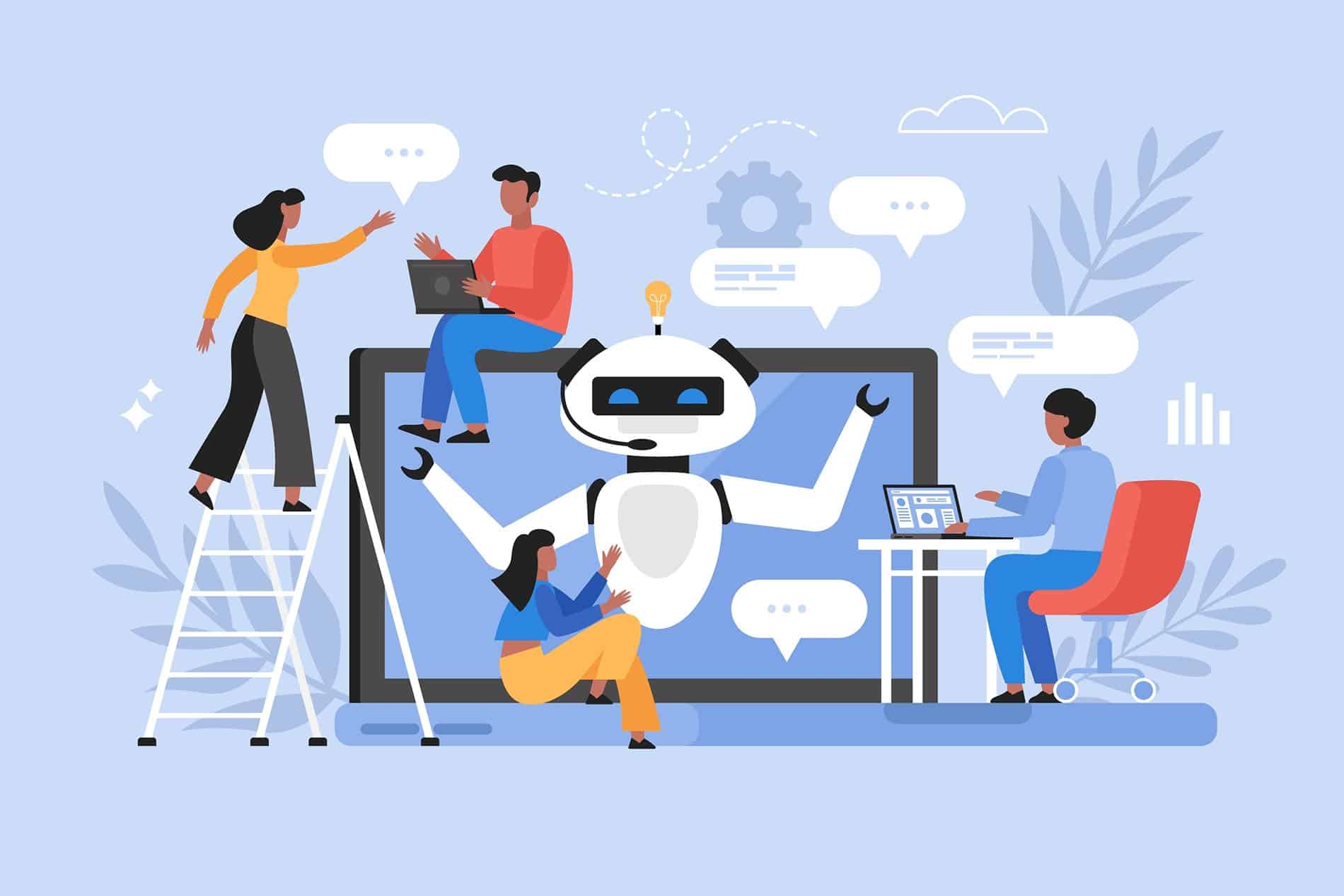As interest in AI skyrockets, organizations are looking for the best ways to incorporate AI into their businesses and better serve customers and end-users. In IT, one way to bring in AI is through the use of chat for self-service. However, many existing chatbots have left a bad taste as they are too simple and can’t assist users with more complex issues. The end result is often frustration and a poor customer experience.
In fact, a recent market study from CIO.com found that nearly 76 percent of chatbot customers report user frustration with existing solutions. That’s a HUGE number. So how can the chat experience be improved? Conversational AI, different from traditional chat, is a great way to improve the chat experience for customers.
When conversational AI is used, the study shows more than 61 percent of respondents could effectively resolve problems vs just 35 percent when traditional chat is used.
Top Challenges for Traditional Chat
When talking about traditional chat, we mean a chatbot experience that has a limited conversation path. It can take inputs and guided dialog paths to return answers in a simplified question/answer format – similar to what you’d get if you searched a knowledge base or FAQ – there aren’t many actions a user can take from the conversation with a traditional chatbot.
According to the survey, few companies are satisfied with their current chatbot and, unsurprisingly, 65 percent say their chatbot isn’t widely used because of the poor experience. As a result, more than 75 percent say they plan to migrate to a different software over the next year or two to try and better the experience.
And with the growing popularity of self-service, this makes sense.
More and more companies are investing in self-service as a strategy to help overburdened IT service desks handle the ever-growing volume of tickets. When you combine automation, self-service and conversational AI – you can have a positive impact on IT resource drain and improve the experience of your customers and end-users.
The top 5 challenges with existing chatbot solutions listed by the survey reflect a desire to reduce IT drain, and the frustrations with traditional chat. Those challenges are:
- Existing chat solutions are time-consuming to manage.
- They don’t take action to solve issues – they just offer possible solutions.
- Traditional chat doesn’t self-learn based on feedback and experiences.
- It can be difficult to train traditional chat as it needs to be built out with limited conversation paths manually.
- Traditional chatbots don’t understand user intent and are inaccurate in their responses in many cases.
So how can traditional chat be improved? The capabilities listed as most critical for a successful chat experience, according to the survey, are self-learning, being easily trainable, the ability to automate the fulfillment of requests and programmatic data ingestion for documents, PDFs, forms and other information sources. Conversational AI addresses all of these requirements.
The Advantages of Conversational AI
So how does conversational AI differ from traditional chat? Aside from the capabilities mentioned previously, conversational AI leverages natural language processing and understands intent. While they do need to be trained, with conversational AI you can facilitate more complex conversations and resolve issues through actions vs. the traditional chatbot’s question/answer limited dialog path.
Because conversational AI chatbots understand intent, they are much more effective when it comes to assisting customers and end-users. For example, when using traditional chat if you say “My password broke” it would likely respond with something like “I’m sorry, I don’t understand that. Please type your issue again,” and continue down that path with a final response that might give you links to 3-5 FAQ articles that it thinks might help resolve the issue – leaving it to the customer to further seek out a solution to the password problem.
When you have conversational AI, if you were to say “My password is broken” it can inform your intent and know that what you mean is your password isn’t working and needs to be reset. The response from the chatbot is then something like, “I can see you’re having issues with your password. I’ve sent a reset password link to the email on file.”
On the backend, the chatbot can pull the email address needed from the system where it’s stored and automatically send a password reset email – resolving the issue within the conversation in seconds versus sending the customer links and having them do the work to request the link.
According to the survey, the top drivers for adopting conversational AI include:
- Improving the speed of issue resolution.
- Improving customer experience.
- Improving the efficiency of resource use/cost savings.
- Increasing self-service adoption.
- Deflecting tickets from the IT help desk.
As the survey shows, traditional chatbots are quickly becoming an antiquated solution. Especially when it comes to self-service and IT Service Management (ITSM). By adopting conversational AI, organizations can significantly improve self-service adoption, customer satisfaction and problem-resolution time – all while cutting costs and reducing the drain on overburdened IT resources.
TeamDynamix Conversational AI In Action
Before using TeamDynamix conversational AI, Bowdoin College used an AI chatbot from a different provider.
The college is a long-time user of the TeamDynamix ITSM platform and has derived a great deal of value from the platform’s integration and automation capabilities, Jason Pelletier, senior director of client services and technology said. So, when campus leaders learned that TeamDynamix was launching a conversational AI tool that can integrate with hundreds of enterprise systems, it seemed like a natural choice to switch.
The connectivity is being managed through an integration hub that offers hundreds of pre-built connectors to enterprise systems. If you have a specific solution that is not in the library, there is a connector concierge that will build this for you. Connectivity is ready to go for systems like Workday, HRIS, Salesforce and the Active Directory.
“Being able to integrate the bot with backend systems is very exciting,” Pelletier said. “With TeamDynamix, we have one platform for ITSM with a chat tool that can integrate with our enterprise systems, and then from there we can build automation – this is something we could never have done with our previous solution.”
The capabilities of the conversational AI tool allow for simple, drag-and-drop workflow and automation building. You can easily create integrations between various programs—with no special coding knowledge required. The no/low-code nature of the solution offers a rapid time to value and endless use cases.
Pelletier and his team have taken advantage of this integration and automation capability to create special use cases for their AI chatbot. For example, all employees at Bowdoin receive replacement computers every four or five years, and this is something the organization tracks within the TeamDynamix asset management module. Employees have traditionally reached out to the IT support team to ask when their computer is eligible for replacement.
Now, the bot can answer this question automatically with a tailored personalized answer. By integrating the chat with the asset management system, the query will take the users’ information from SSO to then identify and look up their asset records. Once retrieved, the chat can then take that information back to the chat window.
“We are answering questions faster, with accurate personalized data,” Pelletier said. “When a customer has a question about their equipment, the chat is integrated back into our asset system so that it can give full details to the user.”
TeamDynamix conversational AI has enabled IT staff to offload much of the work they do in answering peoples’ questions to the bot, allowing them to focus on more important tasks.
“We’re just scraping the surface right now,” Pelletier said. “Eventually, I think we could have the bot handle up to 30 percent of the questions our help desk staff are getting now.”
Not only does the bot reduce the workload for IT support staff; but it also creates a better and more equitable experience for students.
“Some people are outgoing, and they have no problem in coming to our Tech Hub to get technical support,” Pelletier explained. “Others have no problem communicating by email. But there are also many users with a language barrier or another reason why they might feel uncomfortable interacting with an actual person. There are also some users who are night owls and need support late at night when we’re closed. The chatbot allows us to meet users where they are and give them the assistance they need—whenever, wherever and however they might want it. If we can relieve even some of the stress they might feel, that enhances their experience.”
They are using TeamDynamix conversational AI at Framingham State University (FSU) in Massachusetts to provide better self-service to students and employees through the chatbot on their portal.
“Having the TeamDynamix chatbot tied into other applications really makes it shine,” said Bill Shew, administration and student information systems coordinator for FSU’s Department of Information Technology Services.
“We’re trying to reduce the amount of time staff spend responding to requests that can be resolved through self-service,” Shew said.
“We’re extending our self-service capabilities for users,” Shew continued. “When they’re looking for information, they can just type in their question instead of looking for specific keywords on our self-service portal, and they can get an instant answer back.”
For example, for common IT questions that have a straightforward answer, the IT team has configured the bot to respond with the relevant information. If the instructions are too long or cumbersome for users to read within a chat window, the bot directs them to the appropriate knowledge base article with that information.
“It’s not much different from using the search option to find knowledge base articles,” Shew said, “but in my opinion, it allows us to fine-tune what people are looking for by aligning specific utterances to answers for a more accurate outcome. As an example, we have responses matched within the bot for things it doesn’t do. If you type in a question that has to do with advising, that’s not part of the IT service portal, so it simply tells the user how to contact the advising center.”
Implementing a conversational AI chatbot on your company’s self-service portal can bring about significant benefits. Not only does it enhance customer experience, but it also improves operational efficiency and reduces costs.
Curious about TeamDynamix Conversational AI? You can learn more here. To check out the full survey, click here: Chatbot Frustration and the Promise of Conversational AI

